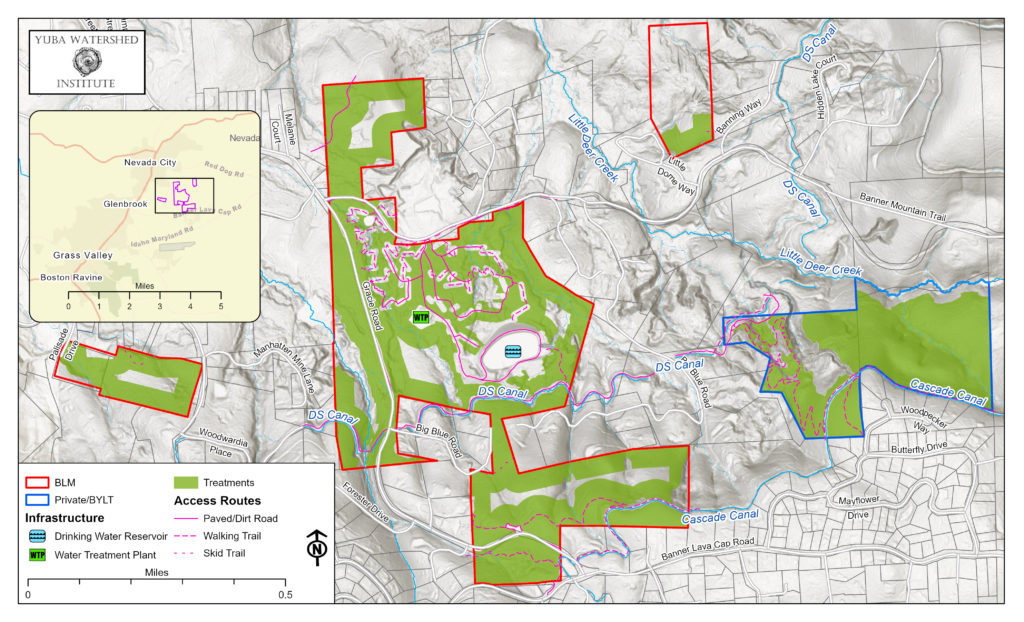
About the Project
Located just half a mile southeast of Nevada City, the Little Deer Creek Landscape Resilience Project aims to revitalize the forest conditions within the Little Deer Creek watershed. Spearheaded by the Yuba Watershed Institute (YWI), the project collaborates with the U.S. Bureau of Land Management (BLM), Bear Yuba Land Trust (BYLT), and Sierra Streams Institute (SSI). Our mission is to bolster the forest’s resilience against wildfires, droughts, and bark beetles, thereby safeguarding nearby communities and firefighters.
Why It Matters
The current forest conditions in the project area have exceeded historical norms in metrics like fuel load, tree density, and canopy closure. This raises the likelihood of devastating, high-severity wildfires that could result in significant loss of mature tree cover, soil erosion, and water quality degradation. Additionally, trees are increasingly susceptible to drought and bark beetle infestations.
The heightened wildfire risk, coupled with the close proximity of populated centers like Nevada City and Grass Valley, amplifies the potential for property damage and poses a serious threat to public safety.
Who Benefits
Recognized as a priority initiative by BLM, BYLT, the City of Nevada City, and the Nevada Irrigation District (NID), this project aims to protect valuable community resources. Among these are the popular Cascade Canal Trail, BYLT’s Woodpecker Preserve, and NID’s D.S. Canal, which serves over 900 customers. The project zone also includes a water treatment facility for Nevada City and a year-round archery range operated by the Nevada County Sportsmen Club.
Project Approach
The project will employ a multifaceted treatment approach, including mechanical mastication, hand cutting, chipping, pile burning, and lop-and-scatter methods. The focus will be on removing smaller trees and shrubs (diameter 10 inches or less), along with larger hazard trees that are dead or dying. Primary target species for removal are incense cedar, Douglas-fir, and white fir.